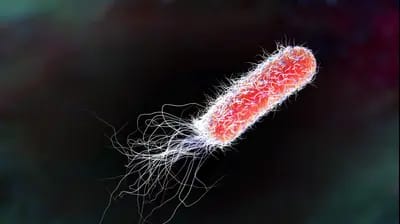Discover the top 5 vegetables for a healthy gut

Explore the latest research on gut health and discover the best foods rich in prebiotics and probiotics.
If you've been on a quest to improve your gut health and overall well-being, you're not alone.
In recent years, scientific research has delved deeply into the connection between gut bacteria and our physical condition. A groundbreaking study has identified the foods richest in prebiotics and probiotics, which play a vital role in supporting gut health.
Selecting a diet that fosters a robust microbiome in your intestines and stomach can be a complex endeavor. However, a study presented at Nutrition 2023, the annual meeting of the American Dietetic Association, has simplified this task by reviewing the prebiotic content of thousands of foods and pinpointing those with the highest concentrations:
- Dandelion
- Jerusalem artichoke
- Garlic
- Leeks
- Onion
As an added benefit, foods rich in probiotics also contain ample dietary fiber, a substance endorsed by the US Food and Drug Administration (FDA) for its ability to support gut health and promote feelings of fullness.
Probiotics vs. Prebiotics
According to study co-author Cassandra Boyd, a graduate student at San Jose State University in California, previous research has demonstrated the health benefits of consuming prebiotic-rich foods. Incorporating foods that promote a healthy microbiome and increasing fiber intake is more feasible than you might think.
Probiotics and prebiotics are essential components for maintaining a healthy gut and facilitating gut recovery, each serving distinct purposes. Probiotics, found in fermented foods, consist of the bacteria themselves, working primarily to balance the immune system and reduce inflammation in the intestines.
Contrary to common misconceptions, most probiotics do not induce significant changes in the composition of intestinal bacteria over time. This transformation is driven by prebiotics, which provide nourishment for the beneficial bacteria already residing in the intestine, ultimately leading to an increase in their population. For comprehensive and enduring gut health improvements, any long-term regimen should incorporate both probiotics and prebiotics.
Research also suggests a connection between a lack of microbiome diversity and conditions like obesity and type 2 diabetes, as reported in a March 2022 article in Biomedicine & Pharmacotherapy.
So, which foods contain the most prebiotics?
In their investigation, researchers consulted previously published scientific findings to assess the prebiotic content of over 8,000 foods cataloged in the Food and Nutrition Database for Nutrition Research, a trusted resource in the scientific community.
Of these foods, more than a third were found to contain prebiotics, with dandelion greens, Jerusalem artichokes, garlic, leeks, and onions leading the pack. These vegetables boasted prebiotic amounts ranging from approximately 100 to 240 milligrams per gram of food (mg/g).
Conversely, items like wheat ranked lower on the prebiotic scale. Foods with minimal to no prebiotic content include dairy products, eggs, oils, and meats.
As for the recommended daily intake of prebiotics, while most dietary guidelines do not currently specify a precise amount, the International Scientific Association for Probiotics and Prebiotics (ISAPP) recommends a daily consumption of 5 grams. The recommended daily fiber intake stands at 28 grams for a 2,000-calorie diet.
To meet the minimum 5-gram prebiotic intake, individuals can include foods like half a small onion or one small onion, six to seven cloves of garlic, a quarter of a medium leek, half a cup of dandelion greens, or a quarter of a Jerusalem artichoke in their diet.
Jerusalem Post Store
`; document.getElementById("linkPremium").innerHTML = cont; var divWithLink = document.getElementById("premium-link"); if (divWithLink !== null && divWithLink !== 'undefined') { divWithLink.style.border = "solid 1px #cb0f3e"; divWithLink.style.textAlign = "center"; divWithLink.style.marginBottom = "15px"; divWithLink.style.marginTop = "15px"; divWithLink.style.width = "100%"; divWithLink.style.backgroundColor = "#122952"; divWithLink.style.color = "#ffffff"; divWithLink.style.lineHeight = "1.5"; } } (function (v, i) { });

